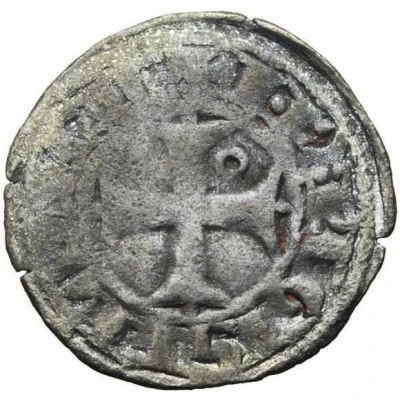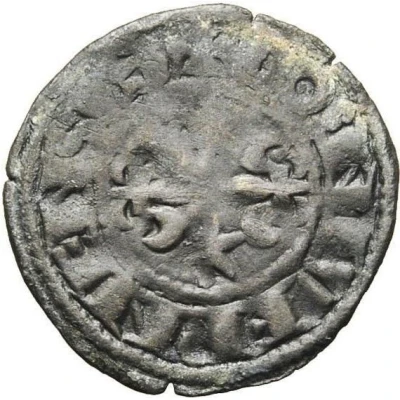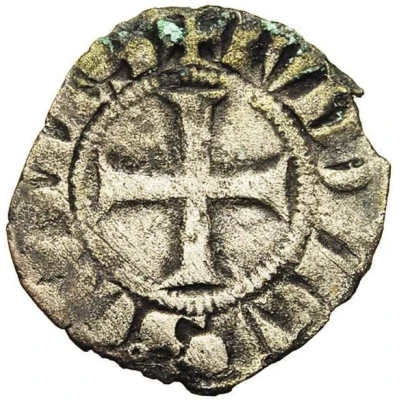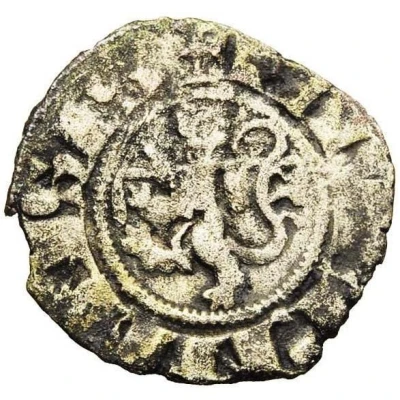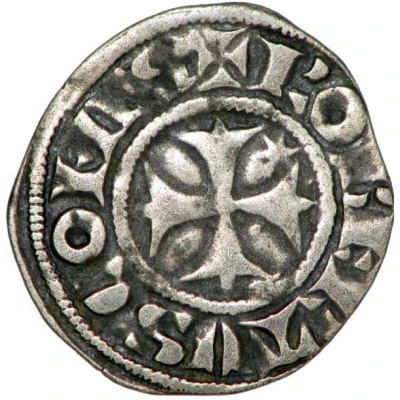
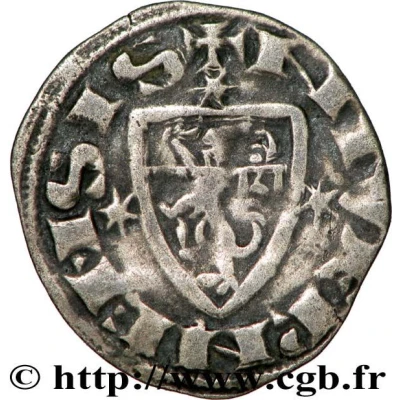

© CGB
Denier - Robert of Dampierre ND
| Silver | 0.96 g | 19 mm |
| Issuer | County of Nevers (French States) |
|---|---|
| Count | Robert III of Flanders (1280-1296) |
| Type | Standard circulation coin |
| Years | 1280-1296 |
| Value | 1 Denier (1⁄240) |
| Currency | Livre |
| Composition | Silver |
| Weight | 0.96 g |
| Diameter | 19 mm |
| Shape | Round (irregular) |
| Technique | Hammered |
| Orientation | Variable alignment ↺ |
| Demonetized | Yes |
| Updated | 2024-10-04 |
| Numista | N#105951 |
|---|---|
| Rarity index | 93% |
Reverse
Flanders shield surrounded by three stars.
Script: Latin
Lettering: ✠ NIVERNENSIS
Translation: Nevers.
Comment
Robert III de Flandre, or Robert de Dampierre, also known as Robert de Béthune, acquired the County of Nevers through his marriage to Yolande de Bourgogne, daughter of Eudes de Bourgogne, Count of Nevers from 1257 to 1265, when he went to the Crusades.Yolande de Bourgogne was already engaged in 1258 to Jean de France, fourth son of Saint Louis. The marriage took place in 1266 and, with the death of her father, Yolande brought the county of Nevers to Prince Jean. Jean died in 1270, without heirs. Yolande therefore remained sole custodian of the County of Nevers.
In 1272, she married Robert de Dampierre for the second time, bringing him the County of Nevers as a dowry.
Interesting fact
One interesting fact about this coin is that it was minted during a time of great turmoil in France, specifically during the reign of King Philip IV, also known as Philip the Fair. The coinage of this period was characterized by a high level of debasement, where the amount of precious metal in the coins was reduced in order to increase the amount of coins that could be minted, leading to inflation and economic instability. Despite this, the Denier coin remained a widely used and trusted form of currency throughout France and its territories.
